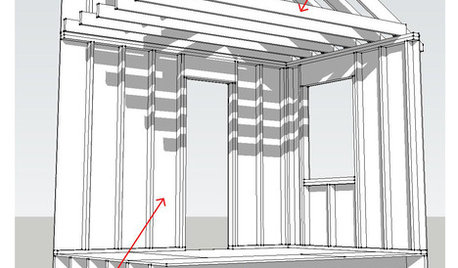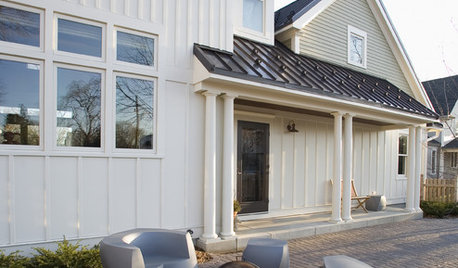Insulating and confused
cathyck
11 years ago
Related Stories

GREEN BUILDINGLet’s Clear Up Some Confusion About Solar Panels
Different panel types do different things. If you want solar energy for your home, get the basics here first
Full Story
GREEN BUILDINGInsulation Basics: Heat, R-Value and the Building Envelope
Learn how heat moves through a home and the materials that can stop it, to make sure your insulation is as effective as you think
Full Story
REMODELING GUIDESCool Your House (and Costs) With the Right Insulation
Insulation offers one of the best paybacks on your investment in your house. Here are some types to discuss with your contractor
Full Story
GREEN BUILDINGEcofriendly Cool: Insulate With Wool, Cork, Old Denim and More
Learn about the pros and cons of healthier alternatives to fiberglass and foam, and when to consider an insulation switch
Full Story
MATERIALSInsulation Basics: What to Know About Spray Foam
Learn what exactly spray foam is, the pros and cons of using it and why you shouldn’t mess around with installation
Full Story
UPHOLSTERYFabric Focus: Cozy Up to Fall and Winter With Wool Decor
Environmentally friendly, durable and insulating, wool is an all-around good pick for home furnishings
Full Story
KNOW YOUR HOUSEKnow Your House: Components of a Roof
Don't get held up by confusion over trusses, rafters and purlins. Learn about a roof's features and their purposes here
Full Story
ARCHITECTURESimplicity vs. Simpleness in Architecture — and Why You Should Care
Don't confuse these two concepts; your home's beauty and ability to inspire are at stake
Full Story
FURNITURESmart Shopper: How to Buy a Mattress
Confusing options, hair-raising prices, haggling ... Our guide can keep you from losing sleep over mattress shopping
Full Story
REMODELING GUIDESRenovation Detail: Board and Batten Siding
Classic board and batten siding adds timeless appeal to traditional homes, modern structures and every style in between
Full StoryMore Discussions







worthy
worthy
Related Professionals
Martinsville Architects & Building Designers · Garland Home Builders · Pine Bluff Home Builders · Spanish Springs Home Builders · West Hempstead Home Builders · Alhambra General Contractors · Bowling Green General Contractors · Brownsville General Contractors · Fredonia General Contractors · Gallatin General Contractors · Greenville General Contractors · Markham General Contractors · Seguin General Contractors · Sheboygan General Contractors · West Babylon General ContractorscathyckOriginal Author
Epiarch Designs
brickeyee